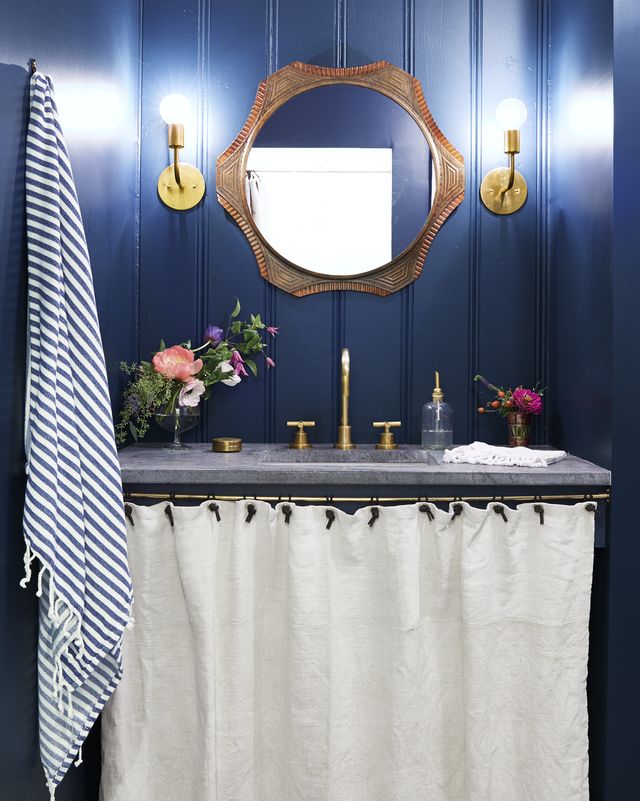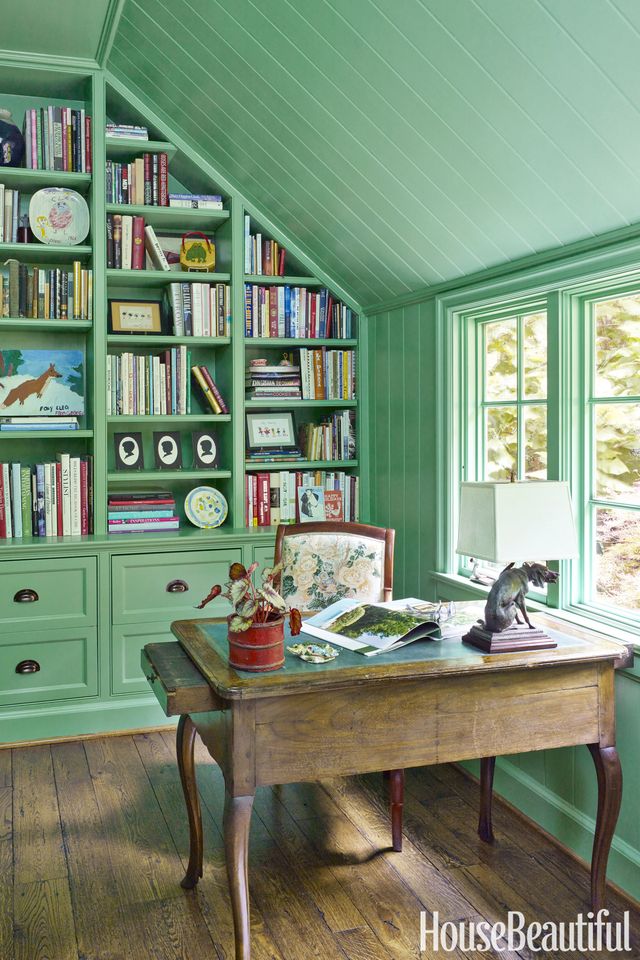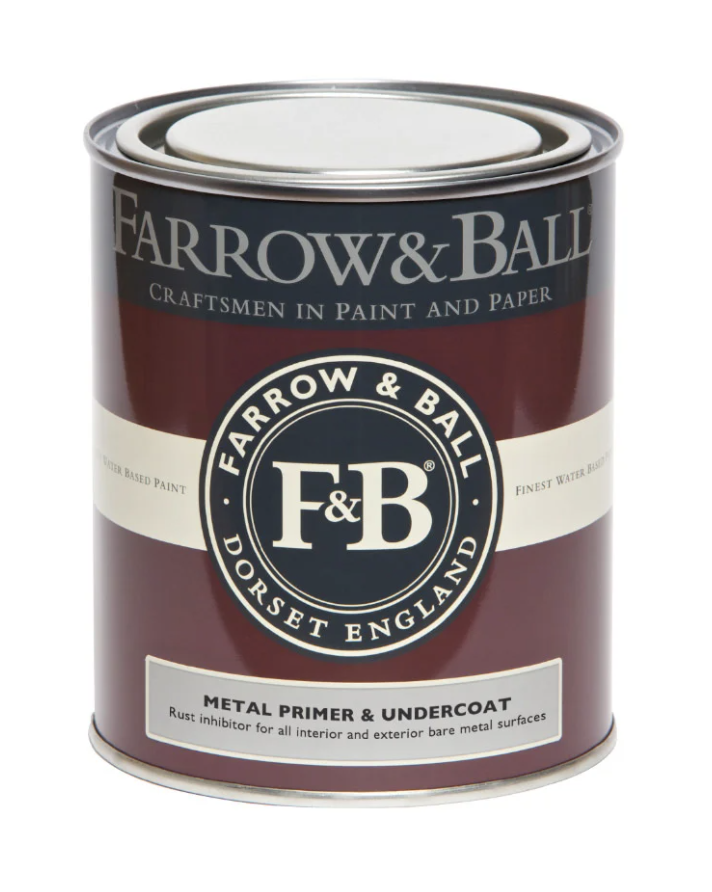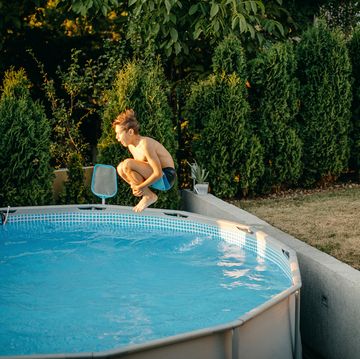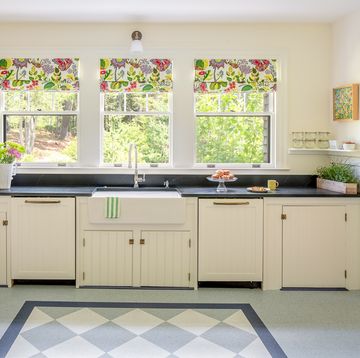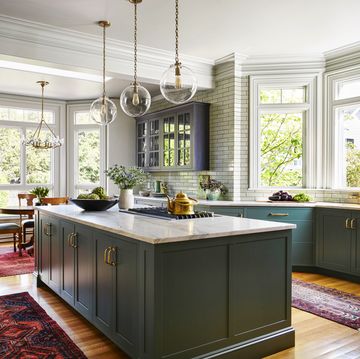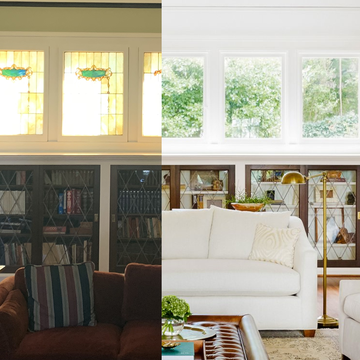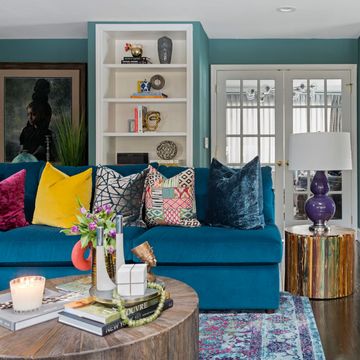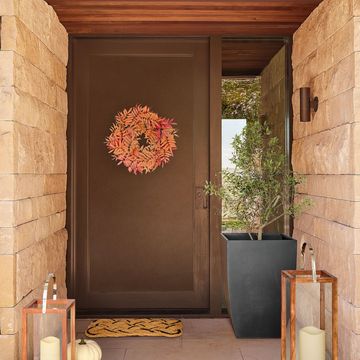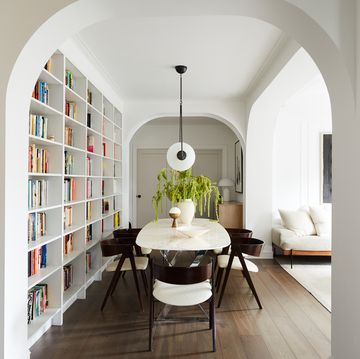After days spent agonizing over which shade of gray to paint your living room, you've finally settled on the perfect color. Congratulations! But before you throw down the drop cloth and pick up a roller, you'll want to make sure that your canvas—i.e., walls, floors, or whatever else you're painting—is in tip-top condition. Enter: primer. While not quite as exciting as what goes on top, it's a crucial step in making sure that the finished project looks as good (and lasts as long) as possible. So what exactly is primer, and how do you choose the right one? We went straight to the experts at Farrow & Ball to find out.
"In some ways, the primer coat is the most important part of decorating," says Gareth Hayfield, head of research and technical development for the U.K.-based paint brand. That's because primer does three key things: One, it makes sure that the paint really sticks to whatever you're using it on—which is particularly important if you're painting over wood or metal. Two, it evens out and smooths any surface irregularities. And three, it provides an opaque base for your color of choice, making it look richer and brighter.
Primers aren't all-purpose, though. A few miracle primers to consider include bonding primer, block filler, and tinted primer. A bonding primer preps slick surfaces for better adhesion when you paint them; block filler helps smooth out masonries like brick and concrete for easier paint application; for major color changes, a coat of tinted primer can help ensure your old paint color doesn't show through your new one. When choosing a primer, start by considering the type of material you're painting.
For drywall, Hayfield suggests a standard wall-and-ceiling primer, like Farrow & Ball's Wall & Ceiling Primer & Undercoat. "Paint already adheres well to drywall, so it's more about creating a blank canvas," he explains. In fact, "if the color you're using is similar to the existing one and the wall is in good condition, you might be OK skipping the primer in this case and going straight to painting."
If you're using paint that's more than a few shades off from the one it'll be covering, primer—specifically, a tinted one—is a must, especially if you want the truest version of the color you've painstakingly chosen (and don't want to have to apply a zillion coats). Farrow & Ball offers four different tinted options in most of its primers: White & Light Tones, Red & Warm Tones, Mid Tones, and Dark Tones. While all fairly self-explanatory, Hayfield says to pay special attention to red paints: "The pigments in red paints don't offer the best opacity compared to other colors, so primer lets you get to a rich result much faster."
Next up: wood. Once again, one size does not fit all. "The reason we have multiple wood primers is that they're all doing slightly different jobs, which means they need the right ingredients," says Hayfield. If you're dealing with bare hardwoods or soft woods, he says, start with a coat of Wood Knot & Resin Blocking Primer to ensure that resin stains don't bleed through. After that's dried, move on to a primer formulated for the location of the wood you'll be painting. Exterior Wood Primer & Undercoat dries to a more flexible finish to allow the wood to expand and contract, while added breathability keeps moisture from getting trapped inside the wood, which can cause the paint to blister and bubble. Interior Wood Primer & Undercoat "doesn't need all that functionality," says Hayfield; instead, it's mainly meant to provide good adhesion. Wood Floor Primer & Undercoat will help paint withstand the wear and tear that comes with being walked on.
Painting brick, stone, or concrete? You'll want a primer formulated for porous materials, like Farrow & Ball's Masonry & Plaster Stabilising Primer. "The resin particles in masonry primer are really, really tiny, so they're able to penetrate down into the concrete or brick or stone and create a really solid layer for the paint on top," explains Hayfield. "If you have something a bit sandy, this will bind it together."
And finally, there's metal primer, which is made with rust-inhibiting ingredients. "It gives you much better durability and longevity, especially for something that will be exposed to the elements," says Hayfield.
What about actually using primer? Apart from the obvious—follow the instructions on the can!—Hayfield says to make sure your surface is fairly smooth before applying, which means sanding off any loose, blistered, or peeling paint, rust particles, or other detritus. Generally, a single coat should be enough (although Farrow & Ball suggests two for metal surfaces). And don't rush—it's imperative that the primer dry thoroughly before applying your paint.
So next time you're gearing up for a big paint project, don't leave the hardware store without paying a visit to the primer section. It may mean a little extra work, but in the long run, we promise it's worth it.
Follow House Beautiful on Instagram.

Emma Bazilian is a writer and editor covering interior design, market trends and culture. She has very strong feelings about tissue box covers and believes that everything is better with toile.

